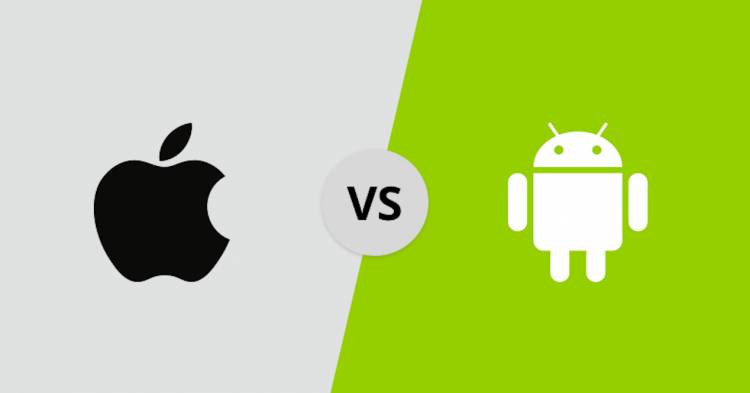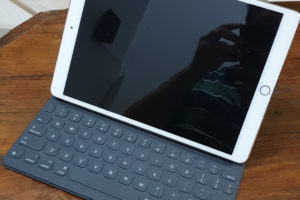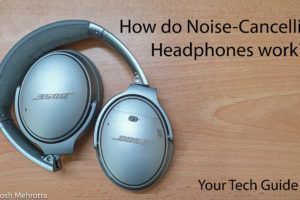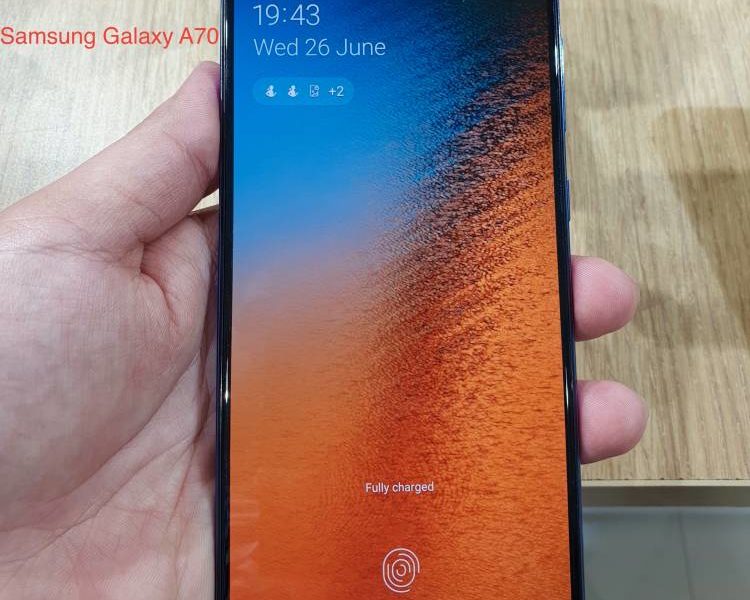Either you die a flagship killer, or live to see yourself become a flagship.
OnePlus has done the exact same thing with the OnePlus 8, which went on sale on April 29th and comes with all the good things and compromises that previous OnePlus phones came with. But there is one huge difference: the OnePlus 8 starts out at a high Rs. 41,999, which is almost Rs. 10,000 more than OnePlus 7, and almost the same as the Samsung S10 Lite. This phone is the most expensive ‘non-pro’ OnePlus ever, the OnePlus 8 Pro being priced like the iPhone 11. But there are major improvements made to the OnePlus 8. Let us see if those explain the significant increase in price, and if the phone would be a good purchase.
Design
There seems to be a trend nowadays to keep the same design for years on end. Though, to be fair, those designs are good and if it is not broken, don’t fix it. Talking about the OnePlus 8, we see the same design pattern that we first saw with the previous OnePlus devices, with modern and simple metal-with-glass build and eye-catching colours. Although the OnePlus 8 is the smaller cousin being 13% smaller than the 8 Pro, it is not a small phone at all, standing at a hug 6.55-inches. It is also lighter than the 8 Pro, weighing in at a 180g compared to 8 Pro’s 199g. the phone is also a bit taller and narrower than OnePlus 7, giving it a handier feel and making it easier to hold in the hand.
There seems to be a trend nowadays to keep the same design for years on end.

For the 8 and 8 Pro, OnePlus took a card out of Samsung’s pocket and made the phone with curved front and back glass panels, with a thin Aluminium strip in between. The marriage between the metal and glass is perfect, with no pronounced edges and both flowing into each other. The glass panels, though good looking, are extremely fingerprint attracting and slippery in the hands, the device can easily slip from tables or chairs.
Talking about the back panel, it comes in three colours: Onyx Black, Glacial Green, and Interstellar Glow. All three colours are very good looking, and the texture is smooth. Like many of the phones launched in the past year, the OnePlus 8’s back panel also changes the colour and hue depending on the angle one is looking at it from. This makes up for many amazing and unique textures that you can get. There is one thing missing- an IP rating. OnePlus says it was missed to keep the costs low, but it is present on the US-bound model.

Talking about the sides, we have the power button and the ringer switch (thanks for this!) on the right edge, with the volume rockers on the left side. Though these buttons have been moved a bit up, so reaching them might be an issue for people with small hands, as the phone is also a bit taller.
Display
Display is one area where OnePlus has always shined, and hit above its weight, and the OnePlus 8 is no different. On offer is a 6.55-inch FullHD+ 2400×1080 Amoled display. The display is among the best in the business and has some nifty features as well. Though other flagships have a QuadHD screen, OnePlus 8 has a 90Hz panel to make up for the loss in resolution. And honestly, going from 1080p to 1440p is a compromise which I’ll be willing to make for a higher refresh rate. And the display is sharp enough with a 402 ppi density on a 6.55-inch screen. It makes for very smooth and fluid animations and motions on screen. Though, the default is at 60Hz, so you will have to go and change it in the settings.
Display is one area where OnePlus has always shined, and hit above its weight, and the OnePlus 8 is no different.
Unlike previous phones, which had a teardrop selfie camera in the centre, the OnePlus 8 has gone the Samsung route and put in a punch-hole camera in the top-left corner. This is a controversial choice by the brand, though I find this setup to be better than the older one, with this being less intrusive. And there is an option in the settings to change the colour and location of the status bar so that it covers the hole, making it blend into the black colour.
There is an optical in-display fingerprint scanner in the bottom half of the display, like first introduced with the OnePlus 6T. OnePlus has really made this more secure and faster than previous phones, and it can easily compete with other flagships in the range. Though for people like me, who like the faster FaceID, there is an option for a camera-based face scanner. This scanner, though very fast, is not as secure as the one on the iPhone 11.
Performance
Though the device does not have a ‘Pro’ branding on it, it performs like one. It comes with a Snapdragon 865 SoC with an Adreno 650 GPU. This combination is common among flagships launched this year. You can rest assured that the OnePlus 8 will be able to handle anything you throw at it. In addition to the CPU, there is also 8GB or 12GB LPDDR4X RAM onboard, which would be sufficient for any heavy tasks like photo editing, heavy gaming, video editing, or opening multiple Chrome tabs. The performance is comparable to top-end phones like Samsung Galaxy S20 Ultra and iPhone 11 Pro.
On top of the SoC and RAM, you also get 128GB or 256GB of on-board storage, which is higher than what you got with the previous phones, and good enough to last your usage considering that the phone does not have a microSD card slot. Apps loaded within a blink and multi-tasking was a breeze.
On the battery front, OnePlus has put in a 4300mAh battery, which is sufficient to last for a day or day-and-half with normal use. There is also support for Warp Charge 30T, with a 30-watt charger included in the box. This charger can take the device from 0% to 100% in around 60 minutes. Screen-on time is about 7 hours, compared to the segment average of 6.
You also get Bluetooth 5.1, which means the connectivity will be top notch without lag or drops. On the speaker front, you get a dual speaker setup with the earpiece being used as a front firing speaker. But you do miss out on adaptive display (which is there in OnePlus 8 Pro) and wireless charging.
Software
On the software front, you get Android 10 based OxygenOS 10.5.3. OxygenOS has always been among the best overlays for Android, with its near-stock feel and minimalistic approach. It is very fluid, and almost never lags with near-zero bloatware. This year, we see some major improvements and changes being done to the software. OnePlus has dropped support for Shelf, which was its custom home screen focussing on notes, calendars, and widgets, in favour of Google Feed. This seems like a step by OnePlus to enhance the stock feel of the software.
We see an update to the Dark Mode, with Dark Mode 2.0. This allows the OS to enforce Dark Mode forcibly on apps which still have not brought dark mode support (seriously?). But keep in mind, this only works for apps which are specifically supported by OnePlus, and the implementation is to be seen. Other useful features like Zen mode and screen-off gestures are still there, with minor updates.
The IR sensor makes a long-awaited return, so the screen now ones again turns off when kept in the pocket, which makes for some battery saving and avoiding those awkward keystrokes inside your pocket. With its deep customisation options, steady and reliable updates, and stock feel, OxygenOS still remains among the best Android launchers available out there.
Camera
Camera is one area where OnePlus has made sacrifices to keep costs low, and the OnePlus 8 seems to be following a similar path. But due to the higher price, the compromises seem to be a bit much. On the back, we have a triple camera setup with a 48-megapixel aperture f/1.78 main shooter with Optical and Electronic Image Stabilisation, a 16-megapixel aperture f/2.2 ultrawide shooter with a 116-degree field-of-view, and a 2-megapixel aperture f/2.4 macro lens.
Camera is one area where OnePlus has made sacrifices to keep costs low, and the OnePlus 8 seems to be following a similar path.
In the main shooter, OnePlus used the Sony’s 48-megapixel IMX586 sensor which was brought down to 12-megapixel. It produced some good-looking shots, with sharp focus, good colour, and accurate exposure. But there was a lack of optical zoom, with digital zoom being used, which leads to a severe loss of detail whenever zoom goes above 2X. Video quality was fine, with good focus and clarity but sub-par HDR performance. There is also support for Super Slow-motion, but only till 480fps at 720p.
The wide-angle lens, though producing good shots in normal lighting, but the images lose detail and become distorted in low lighting. The Macro sensor, though was a great addition, producing some amazing shots. But, the absence of a Telephoto lens was sorely felt, with almost every other flagship having one on offer.
Verdict
The OnePlus 8 gives a solid package and does many things right. It gives you a sturdy phone with amazing build quality, a gorgeous display, and eye-popping colours which are sure to make heads turn when you take it out.
It is a phone with flagship-level performance, a clean and fast OS, and a large battery, at almost two-thirds the price of a flagship. But there are some compromises, like the lack-luster camera, which is enough only for casual photography, lack of wireless charging, and missing out on an IP rating. The OnePlus has made some compromises to keep down the cost, and they did a good job; OnePlus offers flagship-level specs in a fraction of the cost.
It would be a good purchase for those looking for a reasonably priced phone with great performance, but do not mind a bit compromising on the camera. You will surely not regret getting it.
Do share your comments in the comment section below. Cheers!
![]()

























